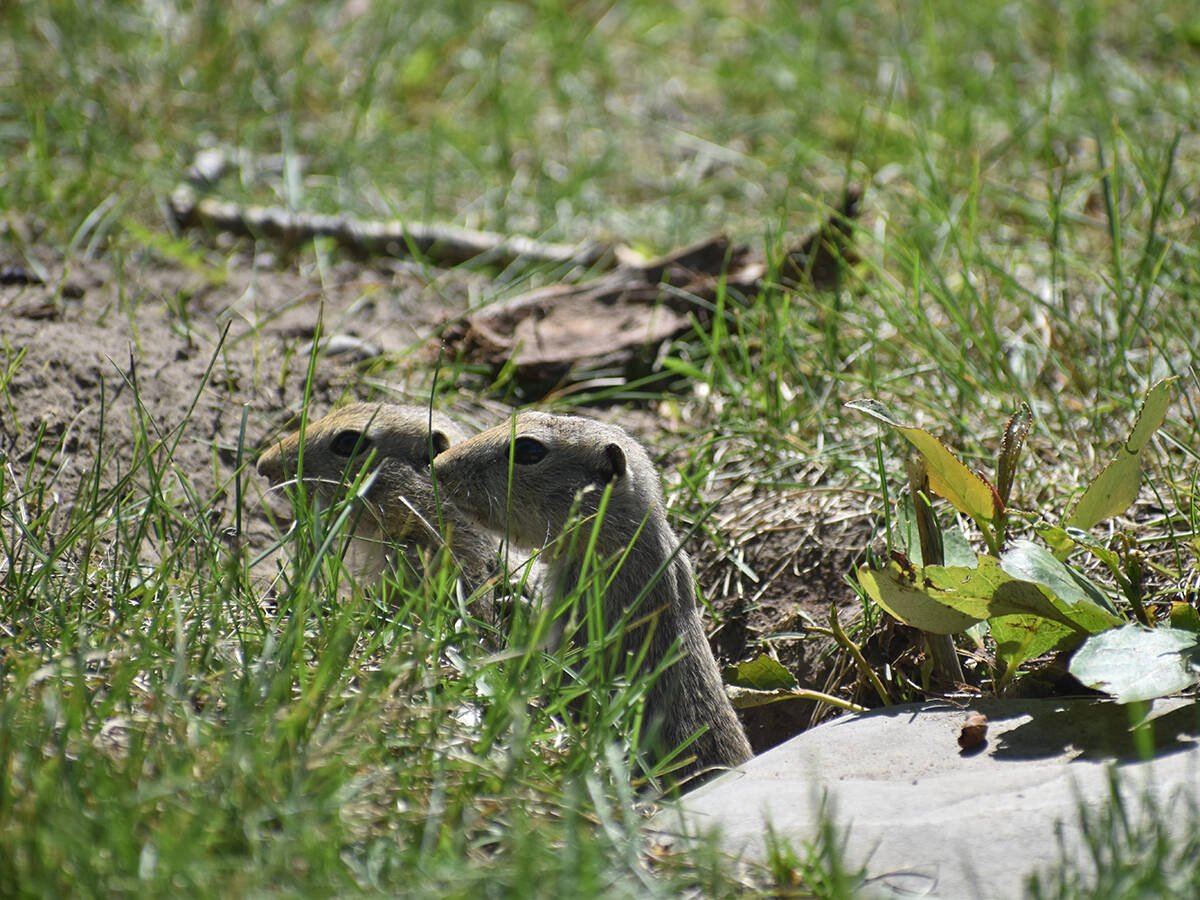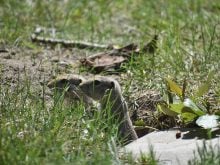John Gavloski likens alfalfa to a rainforest because of the diversity
of insects that can be found in the crop.
Many of them are good, but others can be destructive.
Gavloski, an entomologist for Manitoba Agriculture, recently told
Manitoba alfalfa growers about some of the insects that need the most
vigilance, including species that have appeared in the province only
recently.
Alfalfa weevil
The alfalfa weevil, which has been in Canada since the 1960s, was first
Read Also

Rural officials hopeful strychnine use will resume
The Saskatchewan Association of Rural Municipalities is taking a verbal commitment from the federal agriculture minister on strychnine use as a good sign.
seen in Manitoba two or three years ago. It remains confined to a
couple of areas of the province.
The larva has a green body, a black head, no legs and a white stripe on
its back. It makes ragged holes in the upper leaves of alfalfa plants.
It matures into a brown beetle that has a dark stripe on its back, but
Gavloski said the larvae do the most damage.
Cutting the alfalfa crop a bit early – the bud or early bloom stage –
can kill 80 to 90 percent of the larvae, because it exposes the larvae
to the sun’s heat, which they don’t tolerate well.
Insecticides are also available. Check the current Guide to Crop
Protection for Manitoba for more information about economic thresholds.
An area from Brandon to Killarney, Man., is most at risk. The insect
has also been found in the Carman area in low levels.
In areas where there is a risk, scouting should be done weekly
beginning in early June, Gavloski said.
Alfalfa blotch leafminer
The alfalfa blotch leafminer is also a newcomer to Manitoba.
The larvae make a feeding pattern on the leaves that starts as a narrow
trail and ends in a big blotch.
“The pattern becomes almost like a question mark by the time the damage
is done,” Gavloski said.
The leafminer matures into an adult fly that leaves pinhole-sized
punctures in the leaves when feeding on alfalfa.
Insecticides are registered, but the insect rarely reaches levels that
justify spraying.
“This (insect) is something we don’t have to get overly excited about,”
Gavloski said.
“Overall, your yield losses are not overly tremendous from it.”
Alfalfa butterfly
Alfalfa butterflies were abundant in many of Manitoba’s alfalfa fields
last year. They are yellow with black edges along the wings.
The insect has a velvety, green body while still in the caterpillar
stage. The caterpillar has three pairs of true legs at its front, four
sets of short, stubby legs in the middle and one pair of stubby legs at
the back. It also has a solid white stripe along its sides.
“There were a lot of them last year in the fields, but in most cases
they don’t do a lot of damage.”
It’s important that people know how to identify the caterpillar because
it is often confused with more menacing insects that may need to be
controlled with insecticides.
Alfalfa looper
The caterpillar of the alfalfa looper resembles an inchworm in its
movements. It has a set of stubby legs at its back end, two sets of
legs close to its back end and three sets of true legs toward its front.
Other distinctive markings include two sets of white stripes on either
side of its body.
A natural virus kills off most of the alfalfa looper population,
usually during the later stages of the larvae’s development.
This insect seldom reaches the thresholds that warrant spraying,
Gavloski said. Again, it’s a matter of being able to tell it apart from
other insects that can cause more damage.
True armyworms
True armyworms are not usually a problem, but some Manitoba producers
were forced to spray against them in a variety of crops last year,
Gavloski said.
True armyworms are the only caterpillars found in alfalfa fields that
have brown bands on their back legs.
The best time to scout for them is late in the day or early in the
morning. Check the plants and the ground. The worms may pose a problem
if there are more than 10 per sq. metre.
Aphids
Aphids appear every year in alfalfa fields, Gavloski said.
When scouted with sweep nets, infestations as high as 300 per sweep
have been found and the aphids still were not causing enough damage to
justify applying insecticides.
He said producers don’t have to worry about them unless the alfalfa is
under stress from drought and there are extremely high aphid counts.
“Normally in alfalfa it’s not a big concern.”
Beneficial insects
Ladybugs and green lacewings prey on insects harmful to crops.














